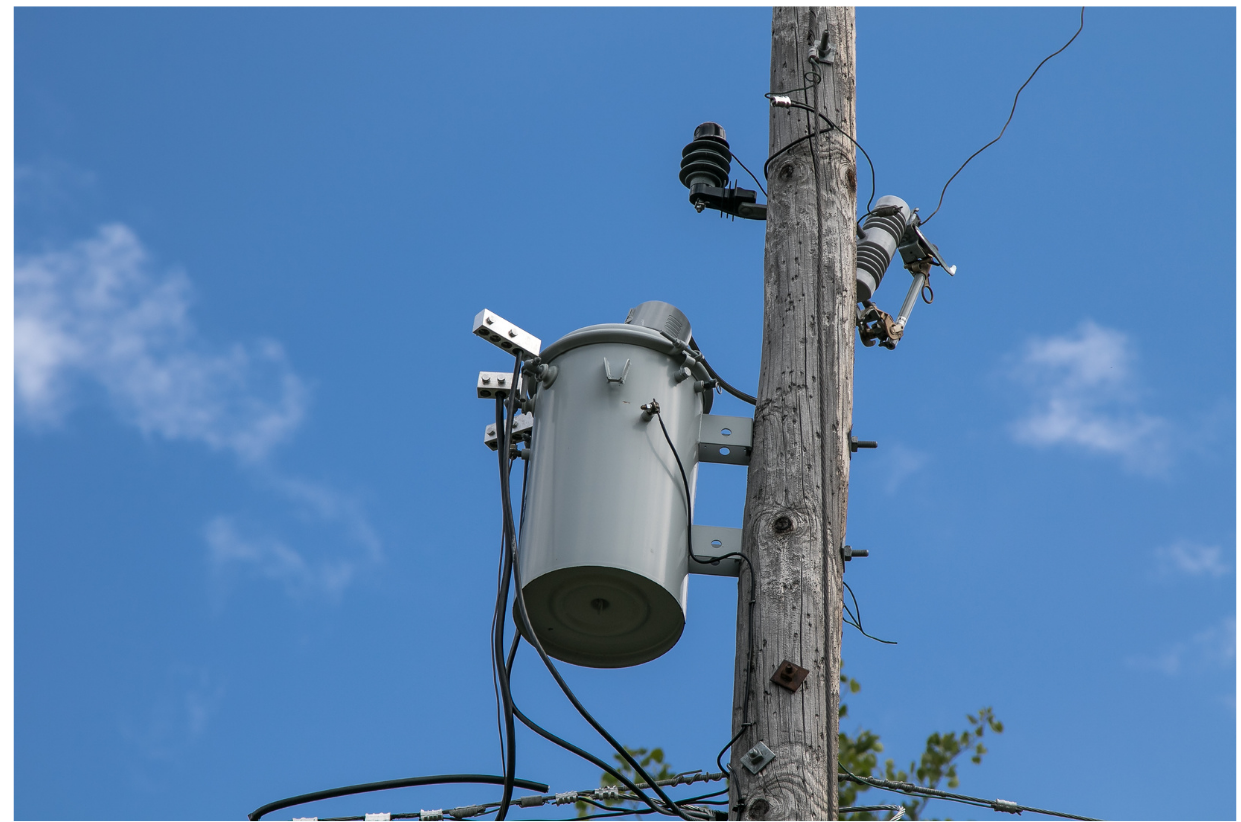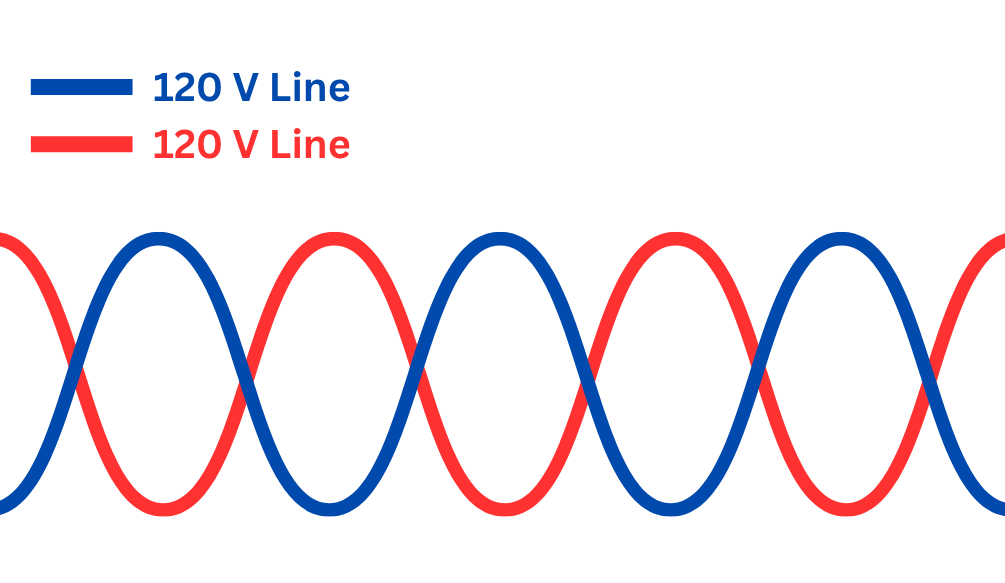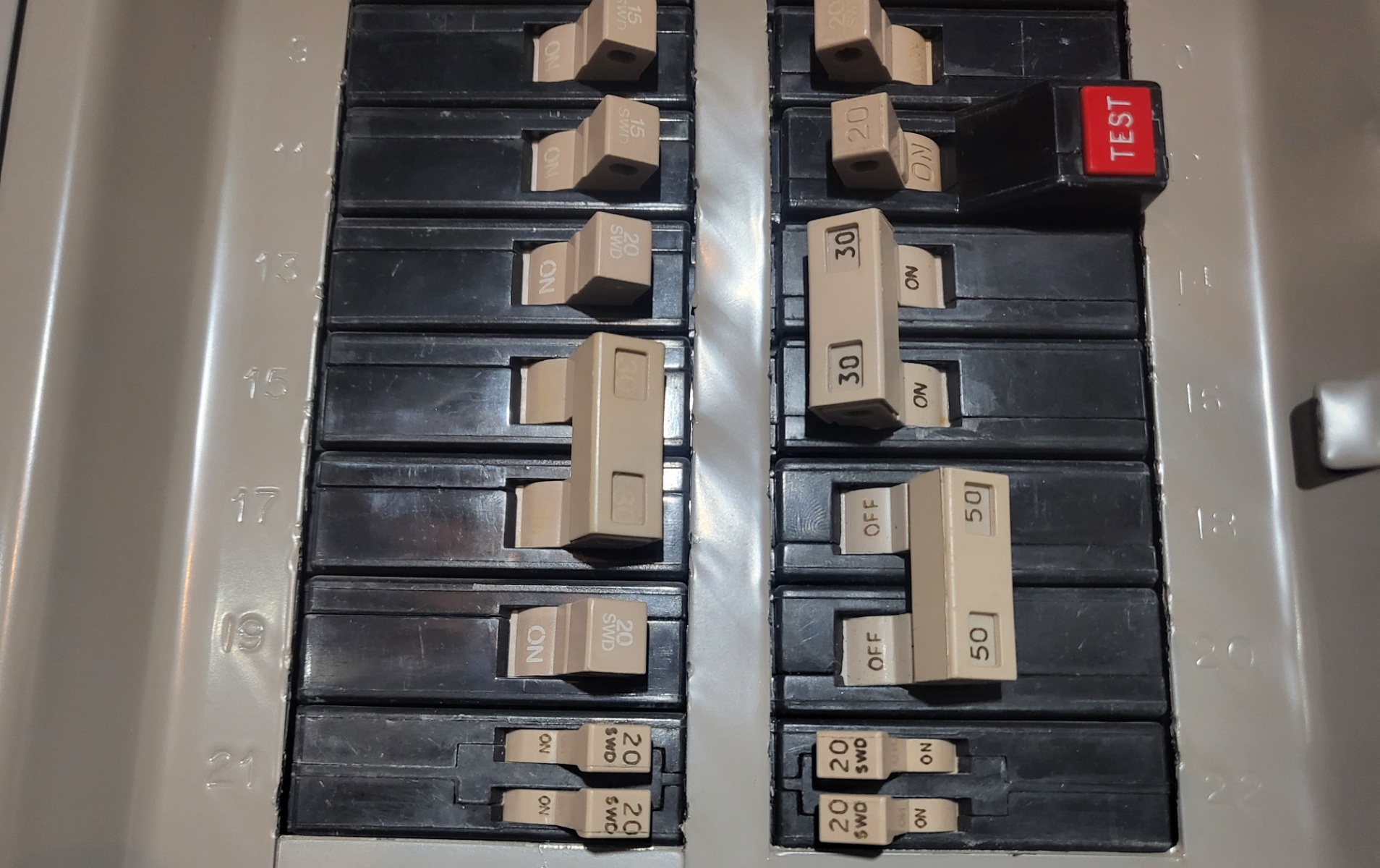Power to your Home/Service Panel
Power to your Home/Service Panel
Finally, once the power line is near your home, it is still too high a voltage. A transformer on a power pole does the final step down to 120/240 volts, which can be used by appliances in the home.

Without going into too much detail, the transformer on the pole creates a split-phase system. This means there are two 120-volt power lines going into the house. This allows appliances that are designed to run on 120 volts to use the power.
Split phase also means that the two 120-volt power lines are run 180 degrees out of phase. This means that when there is a peak of the sine wave of one 120-volt wire, the other wire’s sine wave is at the bottom of its trough

When connecting a 240-volt appliance (like an electric clothes dryer or an air conditioner, for example), an electrician can take advantage of the split-phase nature of the incoming power and connect the two 120-volt circuits in series. When connecting in series, the two voltages add up, so 120 + 120 = 240 volts!
In a service panel, you will find the electric clothes dryer connected to two breakers. These breakers are double-pole breakers that are mechanically bonded. One breaker is connected to one phase of 120-volt power, and the other breaker is connected to the other phase of 120-volt power. Since these breakers are mechanically bonded, if a fault is detected in one of the breakers, both breakers will trip, breaking the connection to the appliance.
